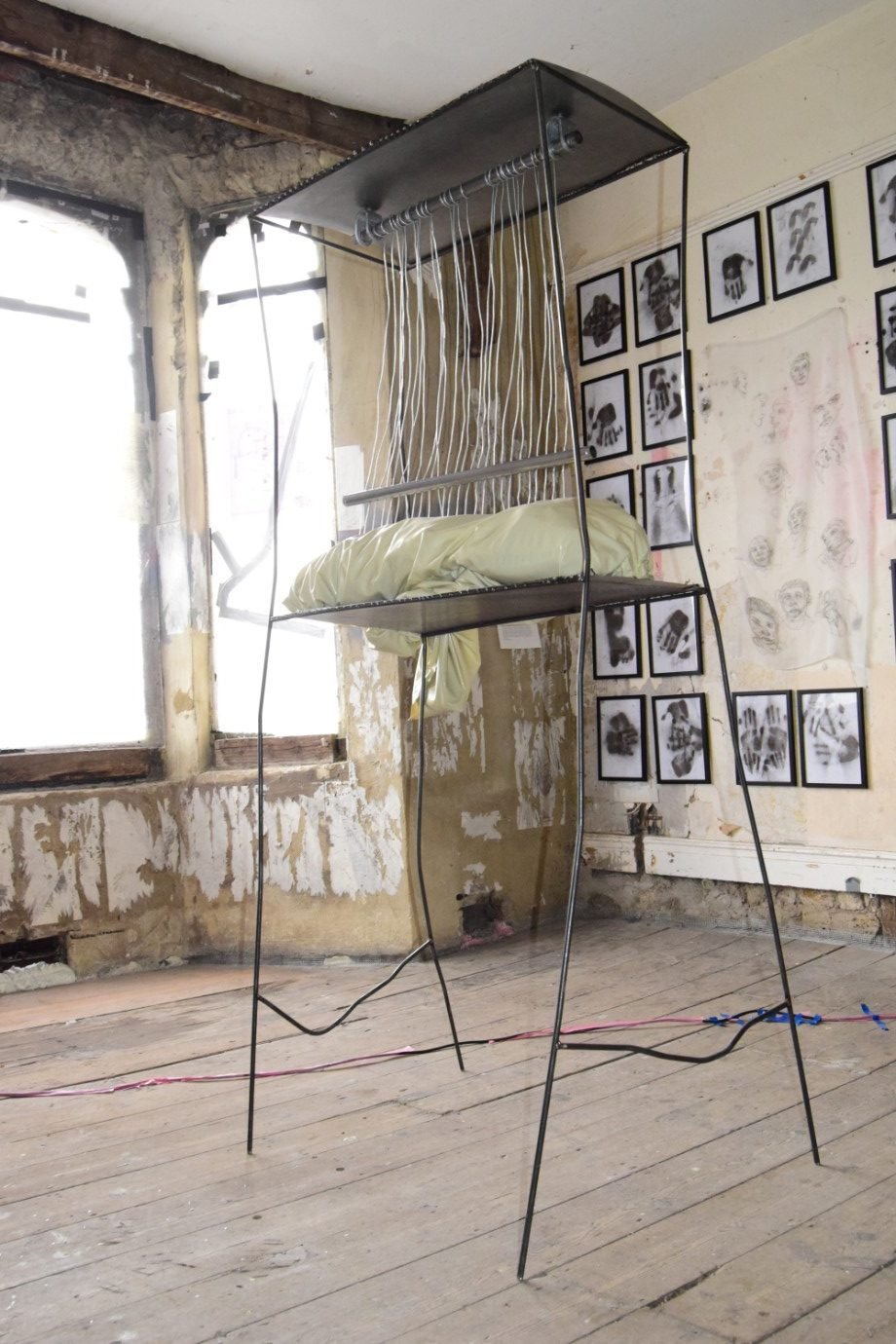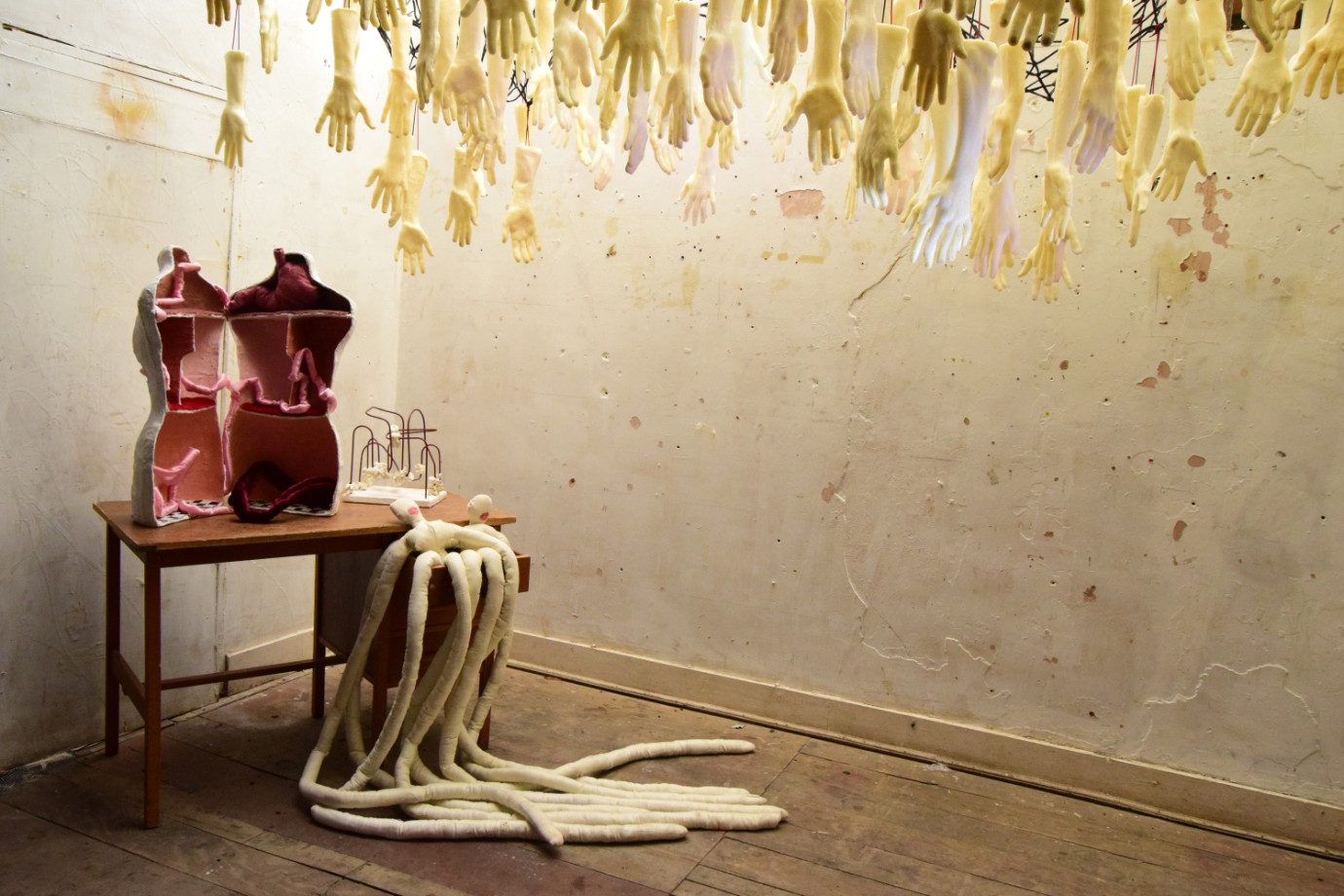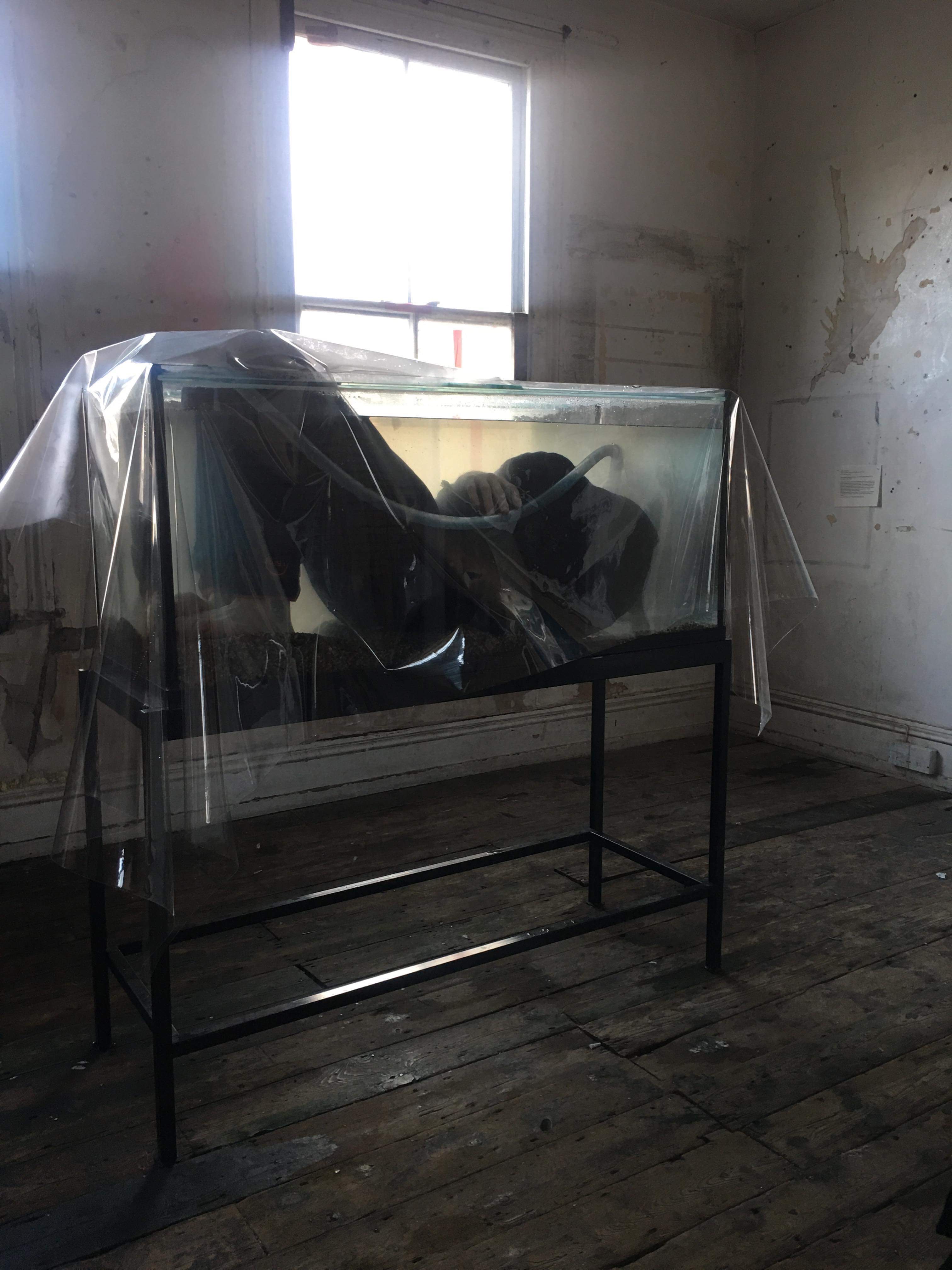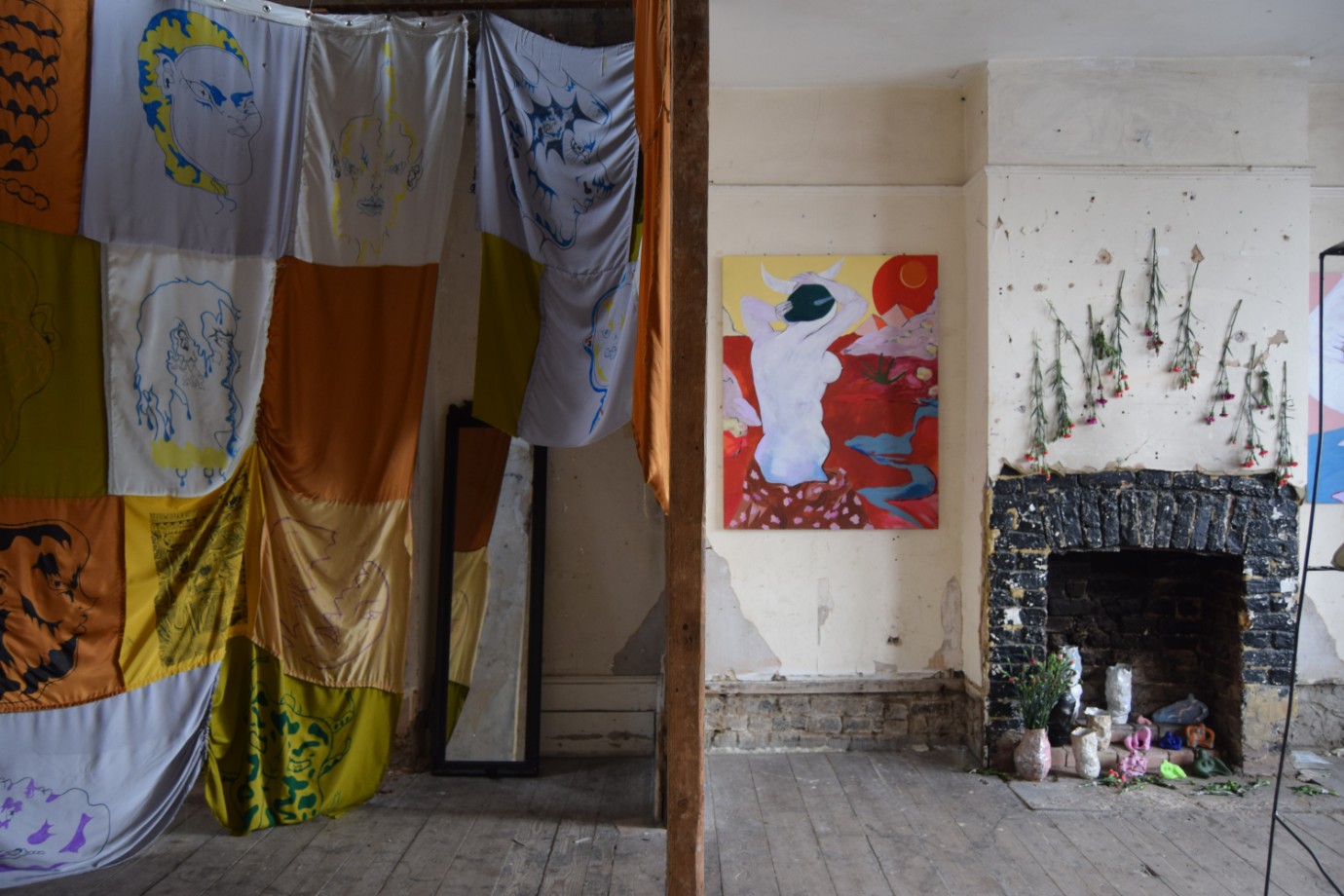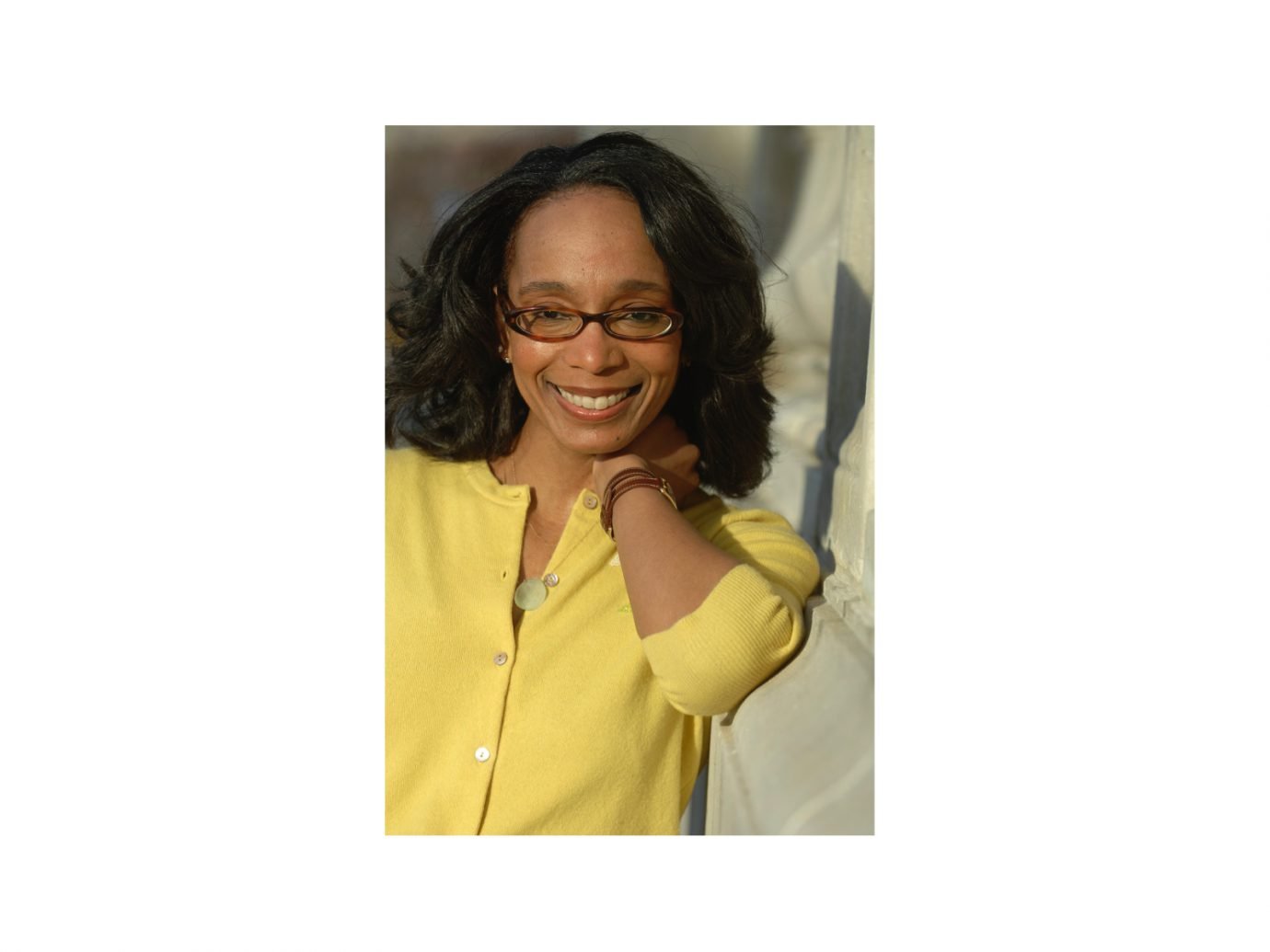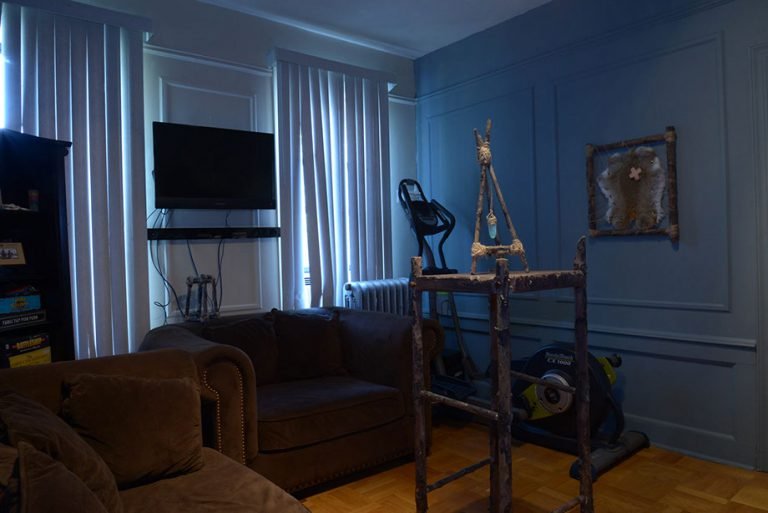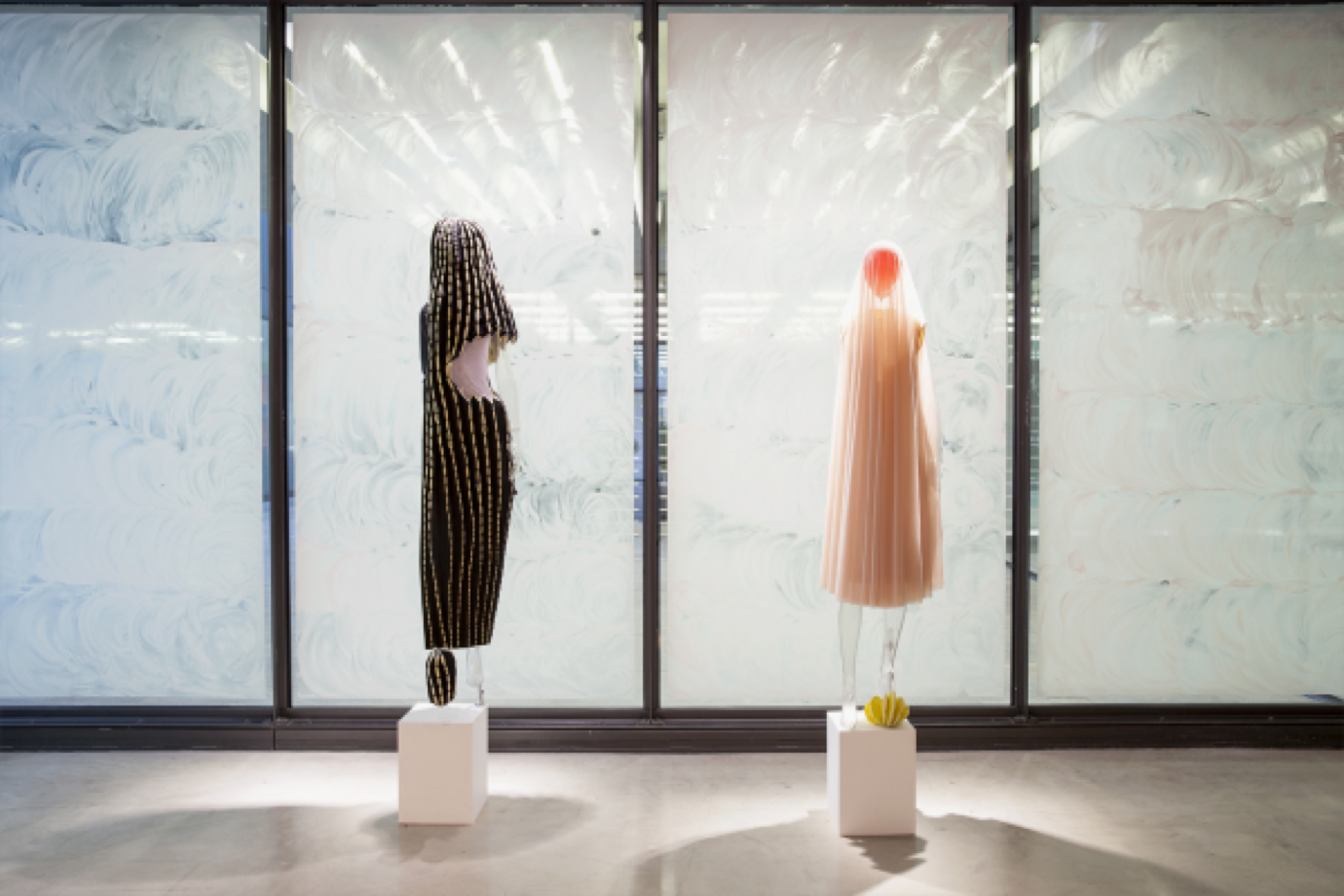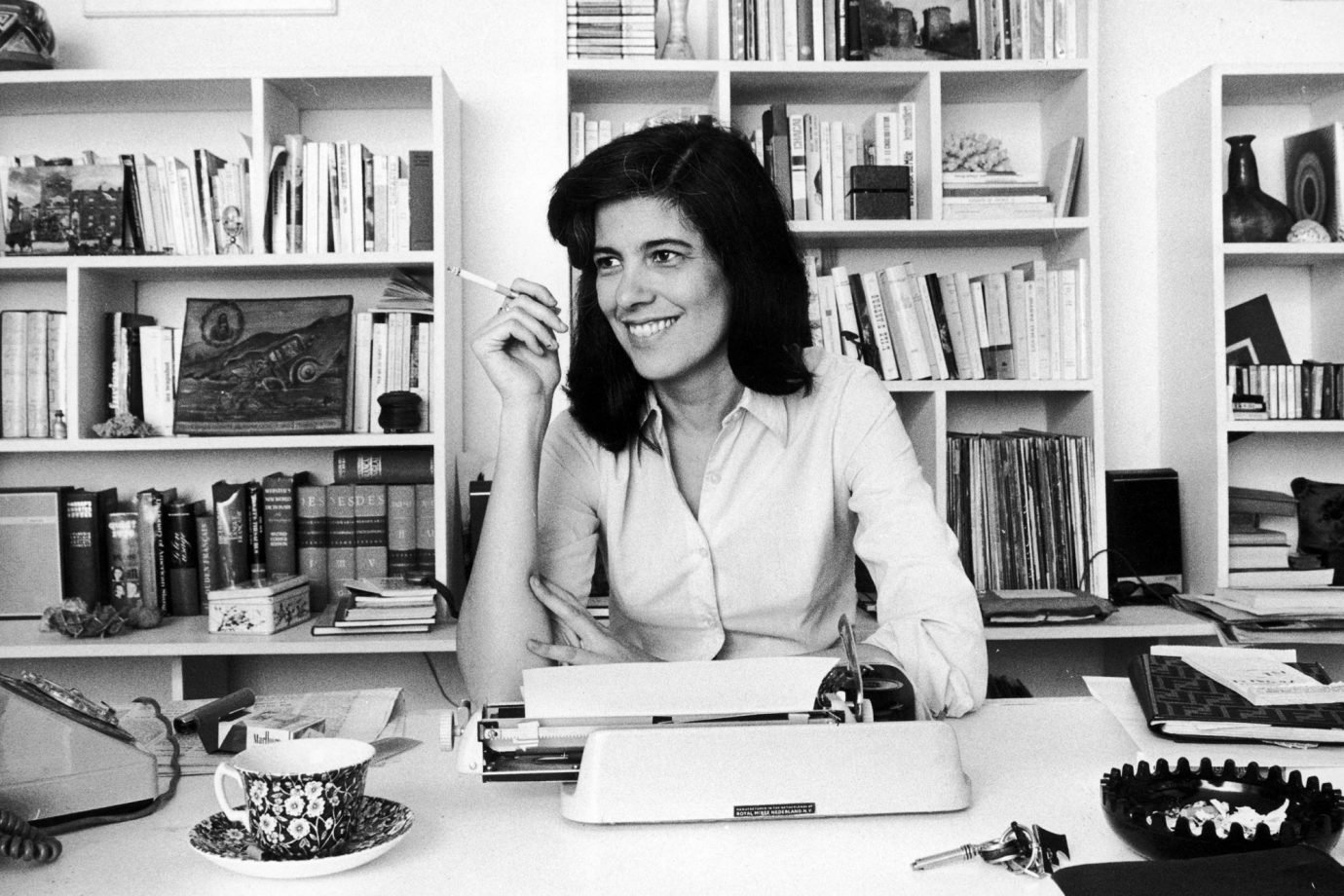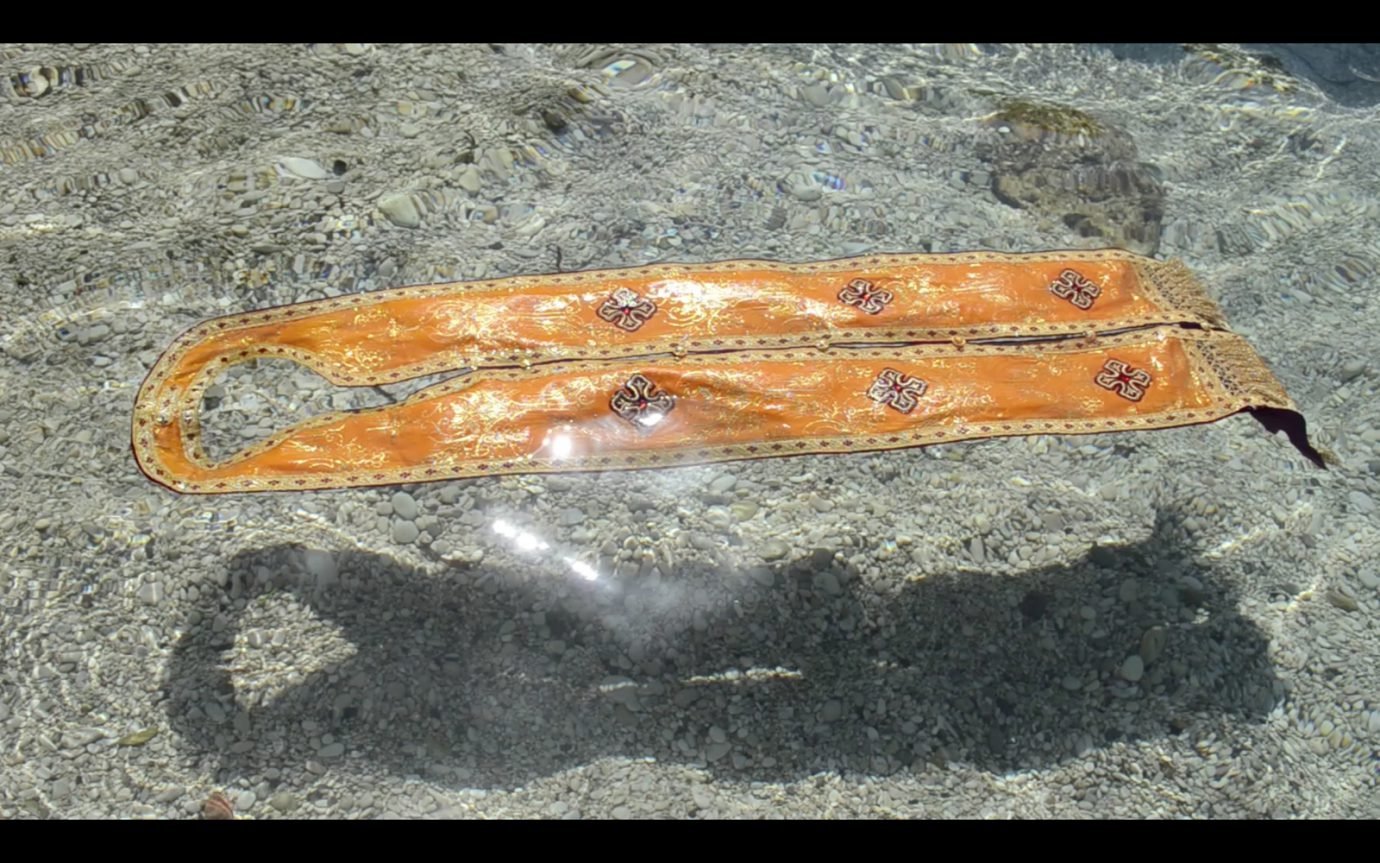As two students from Central Saint Martins studying Culture, Criticism, and Curation who are (relatively) well versed in (sometimes, quite stuffy) art history and museum theories, we wanted to apply this knowledge of the past to OUR present. And so, we decided to take a few dusty terminologies and questionable histories ‒ and an even dustier exhibition space ‒ in the hope of generating ‘something’ and with a group of like-minded enthusiasts and creatives (which can seem quite daunting and isolating, even within the context of an art school). Doing this we (somehow!?) managed to curate, organise and set up an entire group exhibition, opening and after-event from scratch; borrowing a term from ‘The Poetics of Space’ (it seemed relevant considering the lack of space for young struggling folk like ourselves), SPACE-HONEY began.
How to:
curate an exhibition… with no experience
Rule number 7: thank everyone (twice!)
Tired of the hypothetical, the stagnant, the institutional, the professional; tired of waiting, we decided to establish our own exhibition, titled SPACE-HONEY* (scroll down), as a concrete – if clumsy – curation and collaboration between artistic practitioners.
Refreshing the avant-garde philosophies of Surrealism almost a century since the movement’s origin, we aimed to refresh Surrealist themes of the subconscious and the spatial with a contemporary viewpoint.
In working with a predominantly female and non-binary group of visual practitioners, the historical ‘boys club’ of Surrealism was turned upside-down. The female form, a common subject of surrealist painting, was often reduced to nude anonymity. However, in moving from subject to creator, female artists have added a feminist ideology to the conversation. In recent years, Surrealist artists and activists such as Leonora Carrington, Lee Miller, Claude Cahun, Leonor Fini, Dorothea Tanning and countless others have been ‘unearthed’, no longer dismissed as muses to the males but recognised as credible creatives in their own right.
Though recognition of previously overlooked artists is long overdue, the sentiment of – “Buy art from living artists, the dead don’t need the money” – as flagged by @creativedebuts, rings true. Most exhibitions, lectures, events are either endlessly looking to history, or are over-emphasising the ‘NEW’.
Tired (lots of tiredness – one key to curation is caffeine) of the endless worship and nostalgia for past avant-gardes, we aimed to hoist some of these ideas to the contemporary realm; from the performative works of Sangwha Yim and Simona Sharafudinov (who both use their own bodies to emote social compliance and digital vs physical space – an issue which is unique to modern society) to the Ellen Antico’s sumptuous paintings rich in ancient symbolism and womanly figures.
In choosing a dilapidated Victorian house as an exhibition setting, the historical ‘household’ realm of femininity could be scrutinised – eschewing the white cube cleanliness for a decaying ‘home’ and Surrealist wonderland – whilst simultaneously offering a very literal enactment of the shortage of affordable space in London. Artist Yasmine Dickens’ combats London’s lack of economic and geographic security with skin-like latex furniture; turning functional, everyday objects into futile mummifications of nostalgia.
Of course, the frustrations of space, both living space and exhibition space, nor the struggle of having little experience, funding or institutional support, are by no means unique to us; spaces and collectives dedicated to, or run by, emerging artists and curators are struggling and succeeding all over. Do not fear! If you can out-tough the trials and tribulations of exhibition-organising, you can also expect some genuine delights to come your way. We were pleasantly surprised by a number of things throughout, one of them being the love and support from new-found artists and now-friends. After sitting in your bedroom for an unsanitary amount of time planning and researching your (possibly crazy?) idea, meeting new artists who not only appreciate it, but want to adapt their creative processes for your concept, is extremely gratifying (not to mention sanity-ensuring!)
The best and most flattering thing to come from the event, however, was being asked to curate and collaborate on future projects by other creatives. From an artists book fair launch (perfectly timed with our publication in making), to a film opening soiree and banquet, to being offered free-curational-reign in the likes of South London’s Bussey and Copeland park (for FREE!), it has only just began to sink in to what extent this exhibition has become an investment for the future.
‘SPACE-HONEY’ began from a quote in a book, to an exhibition, and now seems to be organically evolving into a collective of its own. The most positive message we gained from this is, if when asked the question, ‘where do you see yourself in five years’ and your answer is like anything like ours (mostly consisting of ‘ummmms’ and ‘ahhhh’s’) – it’s possible to do it all! For so long we felt that we had to creatively box ourselves into one genre but with a lineup of the curation and making of arts/writing/poetry/music (not to forget dinner party hosting) to come, ‘Space-honey’ has truly acted as a gateway to merging everything we love into one.
SO, before we get any more blubbery and sentimental, here are some (potentially helpful) tips/ shameful anecdotes we picked up along the way:
1)
Share your idea/proposal with possible venues and artists. The first hurdle of beginning a project can be an incredibly daunting and huge prospect to overcome – remember that if your idea is lovingly cultivated with the right intentions, then people will follow, even if you are bullshitting!
2)
Don’t compromise on quality for quantity – have a valid reason for every piece of artwork included (and not just because they are your friend or have a large social media following)
3)
Emails, emails and more emails. Once you’ve established connections, setting timescales for each stage of the planning process and making sure your artists are aware (and stick) to them is key. Don’t be afraid to bug the hell out of people in the name of organisation! If you’re working within a team, creating a joint email account saves endless forwarding and screenshotting in attempt to coordinate your numerous studio visits/press releases/contacts with local councils etc.
4)
Why would you want to think about economics when you could be thinking about site-specific tapestries and poster fonts? Because without it you are fucked. (With it you are still fucked but at least not so surprised as to when your bank balance sinks.) Make a very detailed budget – you won’t stick to it, and it’ll exceed any horrific total you make, but make one nevertheless. As a self-endorsed, start-up venture, we pumped a fair amount of our own hard-earned money into this project (although we were very fortunate to be granted an amount from our student union initiative fund) and so we also had to be creative about begging/borrowing/stealing as many extra pennies as we could. Which brings us onto no.5:
5)
FUNDRAISING. Our originally conceived plans of a nice’n’proper film screening and a fancy dinner party bombed (fun to plan with rose-tinted spectacles but paying for film rights/ restaurant space to justify ticket charging would cost far more than the events would make and distract from more important things, i.e. the actual exhibition!) Don’t be afraid to DIY it – we hosted a marvelous Dizzy Dali Dinner complete with Surrealist-themed food and characters in my parent’s kitchen (!!) and asked for an estimated donation in return for a three-course meal and an eve of frivolities.
6)
Don’t be too proud and attempt to take on everything single-handedly – friends and family were all too willing to aid us in any way they could (like attending the aforementioned dinner). Hopefully, later down the line, you won’t be using your Mum’s car as sculpture transport, your Dad as a technician, your sister as bar staff and your friends as gaffa-tapers/poster-put-uppers/general-life-savers. But for now, welcome all and any of this with open arms. It is a learning curve, and any help, be it in the form of shoulders to cry on, cigarettes or in cutting on costs, was monumentally beneficial.
7)
THANK all of the above people (twice!)
8)
We hate to admit it, but that ol’ horrid, vapid Instagram and other social network platforms are imperative in getting a crowd in and building ‘hype’ (yuck). In posting frequently and getting an excited following we managed to wrangle an Instagram takeover with the glorious banshee magazine…but don’t over-do it, there is nothing worse than a social media spam and what is the point in having a REAL LIFE exhibition at all if it’s already up on your Instagram feed.
9)
Some of those ‘health and safety’ death pits are worth the struggle (some aren’t). Ensuring you have a license to hold an event/sell alcohol is a bit of a paper-work headache but exceedingly worth it. Getting fined and closed down by the council would not be the best way to embark upon an exhibition career. However, no matter how much your boring gut tells you how problematic it would be to put a human (Giovanni Vetere the performance artist) in a giant glass tank of water on the first floor of an old, crumbling house – do it anyway. (But breath a sigh of relief when the artist decides to leave out the live goldfish.)
10)
Do a 99p store haul. Try not to spend those carefully-funded pennies on 3D posters of animals and religious iconography, but do buy screws and latex gloves and tape measures!
11)
Things that CAN go wrong, probably WILL go wrong. Of course, this is overstating the obvious, but we had a pretty smooth road until a lighting cancellation catalysed a string of last-minute catastrophes. And If you’re anything like us, it will happen all at once, i.e. 20 mins before visitors started piling in: the pipe of the water tank was dislodged and water was gushing through the ceiling, a fuse blew, labels kept falling off the walls,… you get the picture. Miraculously we pulled it together. Try to keep a cool head, buckle down and solve the problem (and invest in some buckets).
12)
Try and schedule some breathing time if you’ve got your install on the same day as the opening. And by ‘breathing time’ we mean at least twenty minutes to shove a dress, some deodorant and some lippy on before the show starts. We were still both frantically getting dressed in the tiny loo by the time people arrived. Not the best tactic for levels of calm nor eyeshadow precision.
13)
Documentation, documentation, documentation! Months and months of hard work fly by in the space of a few days and before you know it your baby is gone. Taking hundreds of images and videos of opening night and installation is key for the reflective process when starting your next venture. (They’re also handy to flick through when you’re suffering from those post-exhibition blues.) Get various people to join you in the plight of manic photography, luckily we had 14 artists and snap-happy friends + managing to bribe/persuade/hire a photography student/professional to get some good-quality images goes a long way; make sure you brief them on exactly what you are looking for beforehand to ensure you end up with a solid coverage of the whole show.
14)
Have a tiny breather, reflect on how much older and wiser you feel, learn from your mistakes…. and then do it all again (but with hopefully better lippy/fewer water leakages!)
*Taking ‘name’ from Gaston Bachelard’s seminal ‘The Poetics of Space’ (1958) – a work which, like Surrealism, is over-referenced – we looked to Bachelard’s statement, “the great function of poetry gives us back the situations of our dreams”, this eloquently tied in with the dream-heavy Freudian influences of Surrealism, but was, later, vital in pinning down our ethos.
The initial inspiration for the exhibition was to “give an object poetic space” – much like Bachelard’s “honey in a hive” which “does not conform to the elementary dialectics of contained and container” – “honey will not be shut up!” This train of thought has proved to be descriptive of our entire process and (astoundingly) superseded this single exhibition. We have, sloppily, slipped and spilled from our ‘container’: from an exhibition to an opening event of performance art with a tank full of water, beautiful live poetry and spoken word, to a crammed gig line-up of 4 (very loud) and a self-published print publication.

